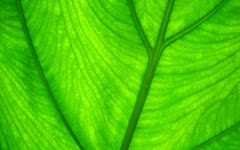 Does baby shampoo need to contain cancer-causing chemicals?
Does baby shampoo need to contain cancer-causing chemicals?No – but it often does. Product tests released by the Campaign for Safe Cosmetics in March 2009 found two known carcinogens, 1,4-dioxane and formaldehyde, in dozens of bath products for babies and kids, including Sesame Street character brands and even the iconic "pure and gentle" Johnson & Johnson's baby shampoo.
This report followed up on test results released in February 2007, which found the chemical 1,4-dioxane in 18 popular baby soaps, bubble baths and shampoos. None of the products tested in either round listed 1,4-dioxane or formaldehyde on the label.Both formaldehyde and 1,4-dioxane are known animal carcinogens and probable human carcinogens, according to the U.S. Environmental Protection Agency. Formaldehyde can also cause skin rashes in sensitive children.
As with many chemicals of concern used in cosmetics, the companies that make these products argue that it's "just a little bit" of 1,4-dioxane in the baby shampoo. Unfortunately, the same baby may be exposed to 1,4-dioxane from the bubble bath, the shampoo, the body wash and many other sources in the same day. Why do products contain these nasty chemicals? 1,4-dioxane is a byproduct of a petrochemical process called ethyoxylation, which involves using ethylene oxide (a known breast carcinogen) to process other chemicals in order to make them less harsh. For example, sodium laurel sulfate – notoriously harsh on the skin – is often converted to the gentler chemical sodium laureth sulfate by processing it with ethylene oxide (the "eth" denotes ethoxylation), which can result in 1,4-dioxane contamination. Sodium laureth sulfate is just one common example. More than 56 cosmetic ingredients are associated with the contaminant 1,4-dioxane.
Formaldehyde contaminates personal care products when common preservatives release formaldehyde over time in the container. Common ingredients likely to contaminate products with formaldehyde include quaternium-15, DMDM hydantoin, imidazolidinyl urea and diazolidinyl urea.
The good news is that many companies in the natural products industry are quitting the ethoxylation habit. New standards such as the Whole Foods Premium Body Care Seal do not allow ethoxylation, and many companies have been quietly reformulating to replace chemicals such as sodium laureth sulfate that are associated with 1,4-dioxane.
Status Update
Testing by author David Steinman released in March 2009 found lower levels of 1,4-dioxane than previously found in an array of products – proof that it's possible to make products without this contaminant. An August 2008 lawsuit filed by the California Attorney General's office against several companies for making products with toxic levels of 1,4-dioxane.
What You Can Do
Avoid using products that list ingredients that may be contaminated with 1,4-dioxane, including sodium myreth sulfate, PEG compounds and chemicals that include the clauses "xynol," "ceteareth" and "oleth." Similarly, avoid products that contain formaldehye-releasing preservatives, including quaternium-15, DMDM hydantoin, imidazolidinyl urea and diazolidinyl urea. To search for products without these marker chemicals, use the advanced search in EWG's Skin Deep database and check the "Contamination concerns" box.In the long run, however, we need laws that protect us from nasty contaminants.
Write to your elected officials and ask them to clean up cosmetics.
More Information
Report: "No More Toxic Tub"Skin Deep: Products that may contain 1,4-dioxane Science: 1,4-dioxane
FAQs: 1,4-dioxane in personal care products
Press release: Cancer-causing chemical found in children's bath products (Feb. 7, 2007)



No comments:
Post a Comment